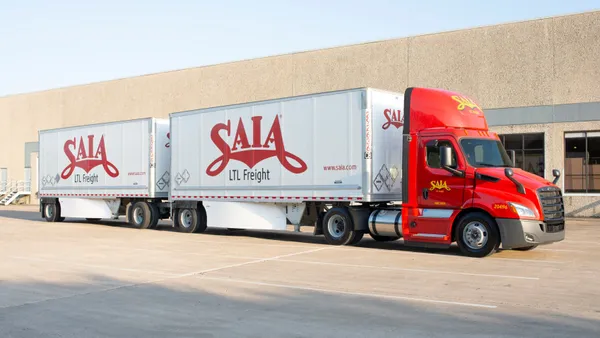Editor's Note: This story is part of a weekly analysis of the logistics industry's latest statistics. See an overview in our data hub.
Dive Brief:
- Rail intermodal and carload traffic spiked in May, reversing a trend of monthly declines in volumes, while cementing the industry's hopes for more steady growth.
- Intermodal shipments rose 1.26% to 1.151 million units in May, while carload shipments rose 2.11% to 1.49 units compared to the previous month. May's figures show the smallest gap between carload and intermodal shipments since at least January 2006, according to seasonally-adjusted figures.
- Compared to last year, the figures also show a marked increase: carload shipments grew 8.13% and intermodal shipments rose 3.96%. However, compared to May 2015, carload and intermodal traffic is still down 3.6% and 1.32%, respectively.
Dive Insight:
While still toeing the line of economic recovery, May's spike in shipments and the continued recovery of carload traffic are beginning to suggest an upswing for the industry. In fact, an advance look at the Association of American Railroads' June 2017 shipments data (not seasonally-adjusted) shows growth will continue apace.
However, the graphic also reveals that railroads are not yet transporting pre-freight recession volumes. So while growth has continued, the industry is still forced to look at other means to improve efficiency and revenues in order to offset the opportunity cost of lower volumes.
Various stories highlight recent attempts to help railroads become more efficient, or tap into opportunities for higher volumes. CSX's recent hiring of Hunter Harrison to implement precision railroading, with fewer services and tighter schedules, is one strategy frequently reported by The Wall Street Journal. Another, first reported by the Omaha World-Herald, involves deploying longer trains in order to improve economies of scale. Lastly, ports are increasingly investing in more intermodal infrastructure to attract shippers to their facilities with more options.
Overall, continued growth in May and June reinforces the end of the freight industry's winter, and a rosy spring to come for railroads.














